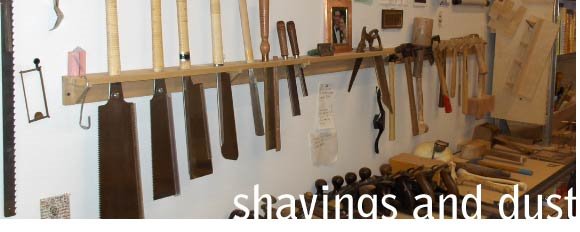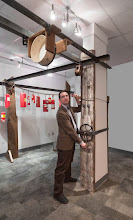I am not a Japanese sword aficionado, of course, but this is a museum built and dedicated to the craft of black smithing, and one of the only of its kind that I know of. And every other Sunday they have a "blacksmithing demo," so that sounded cool. So we set up our travels to stay over in Okayama, and to take a train out to the museum on the only Sunday we could make work. It is not close to anything else at all, so this required a little figuring.
The museum's website is a bit hard to follow, and even with a co-worker of Japanese descent helping me on the US end it was a struggle to get this piece to fit well. Then she told me one day that she had finally made contact with the museum and the Sunday we were going to be there was not, in fact, a Sunday that there was going to be a smithing demo.
Well, hell.
At this point the hotel had been booked, though, and so we went. It went like this: We went to the Okayama train station and got on a little two car train. It was pretty empty. We rattled along (no bullet train, this) through smaller and smaller towns until we got to Kagato, literally a one-track town. We got off the train at the platform, and looked around. There was almost no english signage. We were likely to be the most exciting thing to happen at the Kagato platform in quite a while.
Thanks to various apps that pulled up maps we started walking along a pretty wee-traveled four lane road. It made me think of Reynolda Road where I grew up, or Genesee Street in Syracuse. Trucks going by, cars zooming along. It was a hot, sunny day, and fourteen out-of-towners were walking through the weeds along the side of the road, hoping this was going to be worth it.
We turned left and really started to get into farm land. Rice paddies lay baking in the sun, it must not be time yet to flood them. So there was field after field of light-tan loam looking for all the world like plowed fields everywhere. Then we turned the corner and there it was. Bizen Osafune.
It is situated in a complex of modern buildings, with a separate building for each step in the process of making a sword: Smithing, grinding, honing, engraving, polishing, and making the scabbard. We politely went through the first building which had some lovely sword blades on view. Pretty, but to a guy who neither knows anything about swords no can read Japanese, it was hard to be too excited. We do have a couple of Chinese students, and they can read the kanji but not the -kana, so they translated that this blade was fourteenth century, and this one was twelfth. Cool, but a bit esoteric.
Then I heard the trip hammer.
If you have spent any time around people making stuff out of steel, you know what a trip hammer sounds like. There is a regularity to the way it goes WHANG WHANG WHANG WHANG that is a tip off that someone is making something out of hot steel. I broke in a run to the smithy. And I forgot about the trip hammer.
There was no smithing demo, true. But in a couple of weeks all of the apprentice blacksmiths in Japan are sitting the test to see if they are ready to become journeymen, and they were all at Bizen museum taking workshops to prepare.
Sometimes you have to be sure you are asking the right questions.
So the smithy was filled with people, all 6 forges were glowing, strapping young men were standing around with big hammers. What a show. Several of the forges were in the process of taking the raw iron and adding carbon to it and hammering it flat and then folding it and hammering again, so the sound of several sledges ringing off of the steel filled the room as the apprentices sweated with heat and exertion. It was incredible, I told a student it was like Christmas for me.
They were happily snapping photos, I don't think any of them had ever seen anything like this. I had never seen anything like this. It really transported me to a smithy of a couple of hundred years ago, this is how iron implements were made for hundreds of years in the West and the East. And it does not take fewer resources now to make something out of steel, we have just automated the process. It still takes as much energy, it is just that that energy use is hidden inside some machine.
We went on through the other huts and saw a craftsman filing away at a blade, and another doing some polishing. The polisher had a bowl of lollipops which he handed out with glee. He thought we were very interesting, I am not sure an American school group has ever come through that museum before. We talked to him for a while in pidgin Japanese and he showed us some of his tools.
All in all it was a great trip. It is a special museum, and we are lucky that we hit it at a day when we got to see a part of a process that helped to shape civilisation as we know it. I did not take a lot of photos, but here are a few, Starting with the forge:
Big Japanese style sledges. I love how the head is off-center.
Tongs. One of the first things a lot of smiths do is make their own tongs, a different pair to hold each differently shaped piece of steel. These look a hell of a lot like a lot of tongs that I have used and a few that I own.
In the grinding room. This gentleman is using a file to grind off the hammer marks and to straighten the blade.
The polisher. He brings the blade to a mirror finish.
Little chisels used by the engraver.
An apprentice smith at work. The master holds the steel on the anvil and teh apprentice hits it with the sledge.









No comments:
Post a Comment